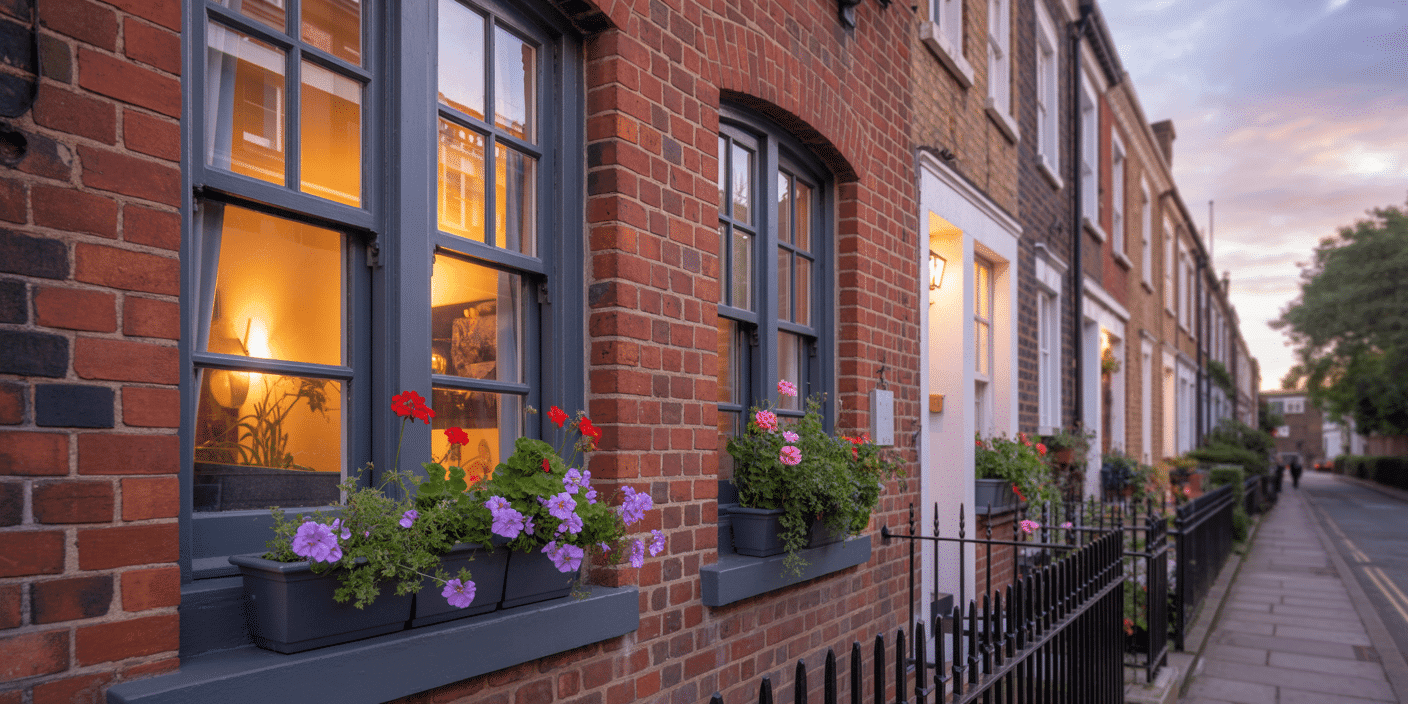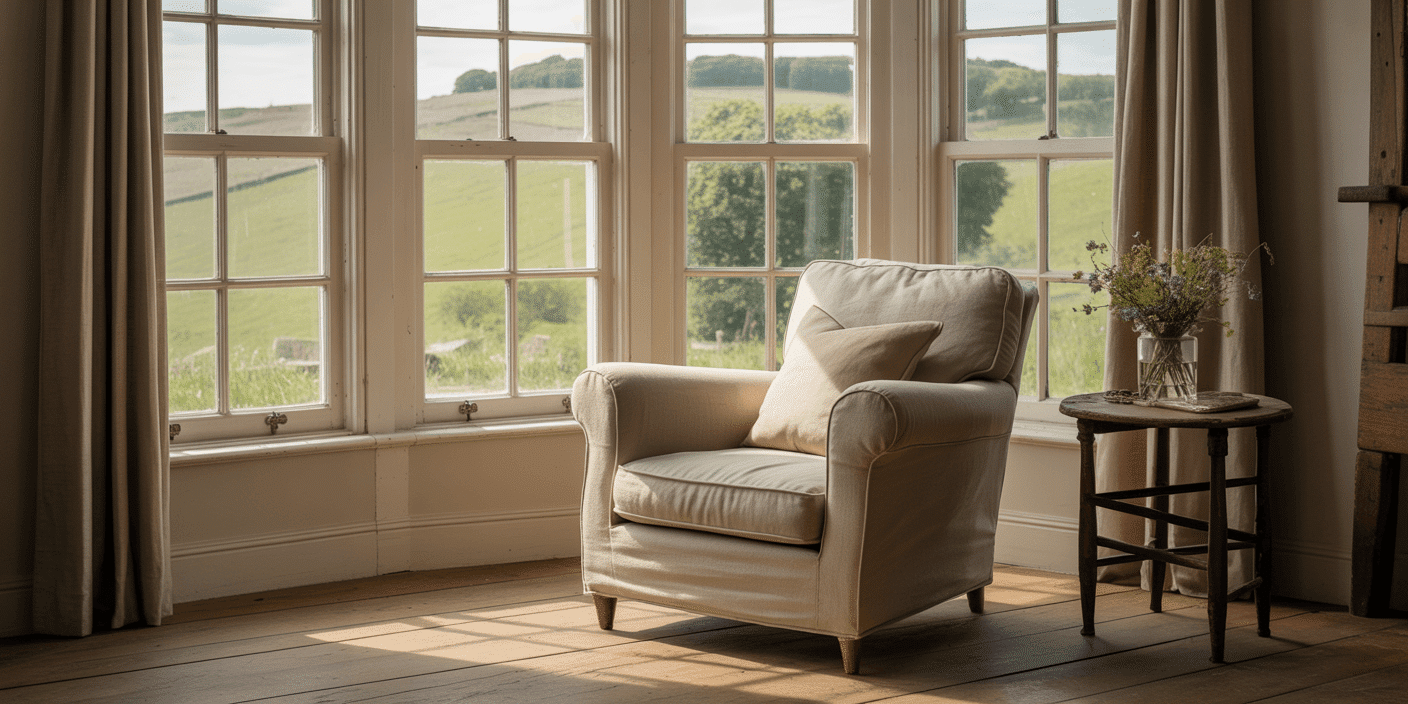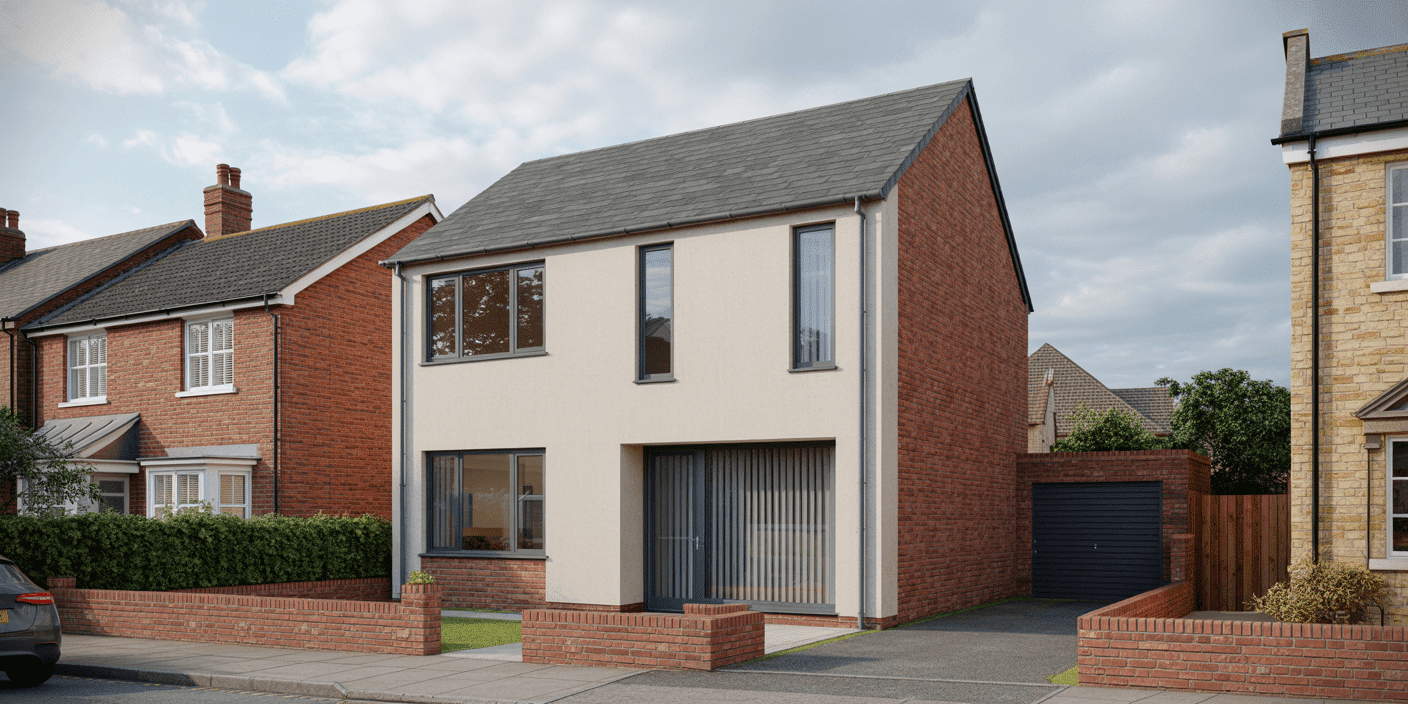Why “U-Value vs R-Value” Is the Wrong Question
In the UK context, comparing U-Value and R-Value isn’t just unhelpful—it’s misleading.
The confusion is understandable. A quick glance at online window guides or generic supplier brochures will reveal insulation values, energy claims, and terminology lifted wholesale from American building standards. Among them, R-Value often appears as a headline figure.
But here’s the reality:
R-Value has no regulatory standing in the UK. U-Value does.
U-Value is the sole thermal performance metric used in British building regulations. It’s the standard recognised by Building Control, Part L compliance, and energy performance certificates (EPCs). When a project is assessed—whether you’re refurbishing a listed building in Richmond or specifying new sash windows in Hampstead—inspectors ask for one figure:
Your certified whole-window U-Value.
And this figure determines far more than just paperwork. It affects:
- The thermal efficiency of your home
- Your compliance status under UK building law
- The credibility of your installer or supplier
Unfortunately, many homeowners and even specifiers continue to base decisions on metrics that have no relevance in this market. Some manufacturers misquote R-Values as a proxy for performance. Others promote triple glazing without reference to verified U-Value calculations.
At Sash Windows London, we see this confusion daily—and we work to correct it.
This article clarifies, decisively:
- What U-Value measures
- Why R-Value doesn’t apply in the UK
- And how choosing the right system protects your comfort, compliance, and long-term value
If your home is losing heat, failing to meet regulatory standards, or bleeding money through underperforming glazing, the issue may not be your windows themselves.
It may be the question you were told to ask.
U-Value Explained — The Number That Actually Protects You
Forget the jargon for a moment.
U-Value is a single number that tells you how much heat escapes through your window. The lower the number, the better your window is at keeping warmth in.
That’s it.
Simple. Powerful. And utterly essential.
Technically, it’s measured in Watts per square metre per Kelvin (W/m²K). But what you really need to know is this:
A window with a U-Value of 1.2 loses far less heat than one with a U-Value of 2.0.
And in today’s UK building regulations, 1.4 is the maximum allowed for new installations in most domestic settings.
This isn’t just a guideline—it’s legally binding under Approved Document Part L, which governs energy performance in homes. Failing to meet it? That can mean rejected planning approvals, wasted retrofit grants, or a property that struggles to sell.
But the U-Value’s importance goes far beyond tick-box compliance.
It’s the metric that tells you whether your family will be warm in the front room this winter. Whether your boiler is working overtime. Whether your investment in glazing actually pays you back in monthly savings.
At Sash Windows London, we build U-Value performance from the first sketch. Not slapped on at the end.
We calculate U-Values for the entire window system—not just the glazing. That includes the frame, spacers, seals and installation method. Because it’s the full system that protects your home—not just the bit in the middle.
Too many suppliers quote glass-only U-Values, which can look impressive on paper but perform poorly in reality. It’s like rating a coat by its zip alone.
We don’t do marketing numbers. We do real numbers, in real homes, backed by real certifications.
That’s what gives you comfort. And that’s what keeps the heat inside where it belongs.
R-Value Debunked — Why It’s a Red Herring for UK Homes
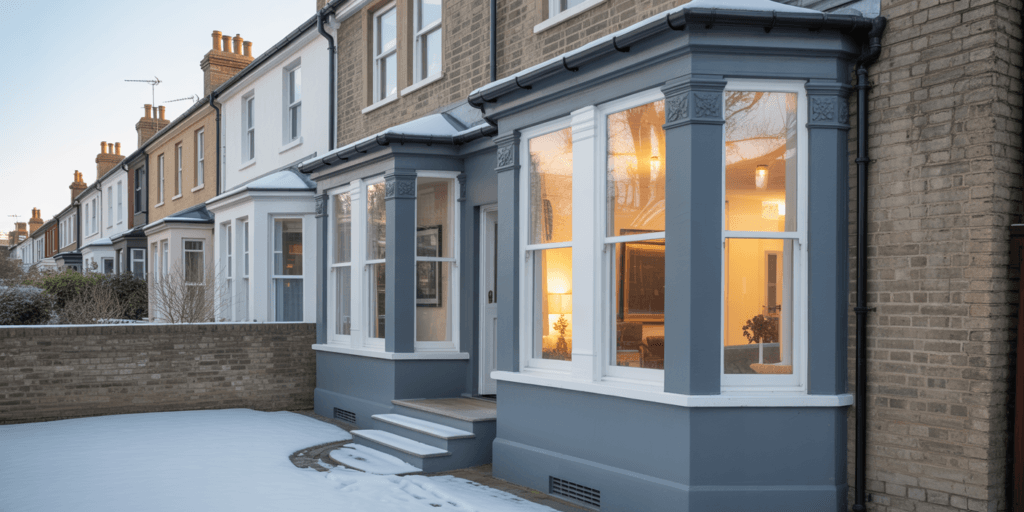
Let’s put it plainly: R-Value has no business in your window quote—at least not in Britain.
It’s not wrong. It’s just irrelevant here.
R-value is a thermal measurement, too. But instead of measuring heat lost, like U-Value does, R-Value measures resistance to heat flow—the higher the number, the better the insulation.
Sounds helpful, doesn’t it?
Except for one thing: R-value is used in American and Australian building standards, not British ones. It’s typically applied to things like loft insulation and cavity wall batts—bulk insulation materials. Not precision-engineered window systems.
Here in the UK, U-Value is the only legally recognised metric for evaluating the energy efficiency of windows, doors, and glazed products. It’s used by:
- Building Control
- Architects and planners
- Energy assessors
- Retrofit coordinators
- And any window installer worth their salt
So, when you see R-Values on a window quote—or worse, someone pitching R-Value as “the same thing” as U-Value—there are only two possible explanations:
- They’ve copied content from an American manufacturer
- They don’t actually understand the UK compliance system
Either way, you should think twice.
At Sash Windows London, we’ve had clients show us quotes riddled with R-Values, thermal promises, and stickers pulled from US datasheets. On closer inspection? No Part L certificate, no verified U-Value, no real protection.
That’s not how you protect a London townhouse. Or a country cottage. Or any home that needs to be warm, legal and future-ready.
So yes, R-Value is a real metric. It just doesn’t belong in your window spec if you’re building, renovating, or upgrading in the UK.
If it’s not a U-Value?
It’s not worth your money.
Part L Compliance — The Regs Don’t Lie
When it comes to window performance, you can argue about aesthetics, material preferences, or acoustic ratings.
But you can’t argue with Part L.
Approved Document L is the official standard for energy efficiency in buildings in England. It’s not an opinion. It’s part of the Building Regulations—a legal benchmark that every window, door and glazed product must meet to be deemed compliant.
The key takeaway?
Your windows must achieve a U-Value of 1.4 W/m²K or better (as of the 2022 uplift) if you’re replacing them in an existing home.
That means anything above that figure—no matter how charming, handcrafted or “eco-labeled”—fails.
Fails compliance.
Fails energy performance.
Fails future-proofing.
And it’s not just a box-ticking exercise.
Failure to meet Part L could mean:
- Refused Building Control sign-off
- Lost eligibility for energy efficiency grants or green finance
- Potential resale complications when EPC scores are audited
In a time when heating bills are rising and low-carbon homes are rapidly becoming the legal norm—not the exception—compliance is no longer negotiable. It’s expected.
This is where Sash Windows London sets itself apart.
We design and install every window to exceed Part L requirements—not just scrape past them. We don’t offer non-compliant options. We don’t fudge the figures with glass-only ratings. We certify our whole-window performance—including frame, spacer, seal and installation method—in writing.
We also provide:
- Verified U-Value documentation
- Installation records suitable for Building Control
- Peace of mind that your home meets the same standard as new builds
Because regulations shouldn’t feel like a trap.
They should be your baseline for confidence.
So, when you hear “U-Value,” don’t just think energy. Think legality. Think longevity.
And think of a company that gets it right—before the inspector does.
What It Means For Your Home: Comfort, Cost, Confidence
Let’s move past the numbers for a moment.
Because while U-Value might look like a technical metric—just another figure on a spec sheet—what it really governs is how you live in your home.
Comfort
A high U-Value means more heat escapes through your glazing. That’s not just inefficient—it’s uncomfortable.
We’ve seen it time and again:
One room is freezing in the morning. The floorboards feel icy. You crank the thermostat, but the warmth seems to vanish the moment the heating cuts out.
That’s not your boiler’s fault.
That’s your windows letting you down.
Low U-Value windows create a more stable indoor climate. They hold onto the warmth longer. Rooms heat up faster, stay comfortable longer, and reduce the draughty imbalance that makes heritage homes feel unpredictable.
Cost
Now let’s talk about your wallet.
Heating accounts for over 60% of the average UK household’s energy use. And poorly insulated glazing is a hidden drain—especially in older sash windows that haven’t been upgraded.
With lower U-Values, you reduce that bleed. You rely less on artificial heating. And over time, those monthly savings accumulate—not in pennies, but in meaningful pounds.
Clients of Sash Windows London have seen reductions in heating costs of £300 to £1,000 per year, depending on home size, heating method and insulation levels. That’s not a gimmick. That’s tested performance, certified and measured.
Confidence
There’s also the confidence of knowing your home is built to a standard that lasts.
When you install high-performance, compliant, certified windows:
- You’re ready for future EPC legislation
- You’re protected during planning or listed status reviews
- And your home feels good, because it’s sealed, silent, and secure
It’s a different kind of upgrade—not just visual, but visceral.
At Sash Windows London, we don’t just restore heritage charm. We embed performance inside it. So that what looks like history behaves like the future.
Because the best number we can give you… Isn’t the U-Value.
It’s the moment you stop worrying about your windows—forever.
Which Window Types Actually Deliver?
By now, the message is clear:
U-Value matters.
So the next question is: which windows actually meet the standard—and which ones are simply dressed to impress?
Let’s break it down. Not with marketing fluff, but with practical, honest insight from decades on the tools and inside planning offices.
uPVC Windows
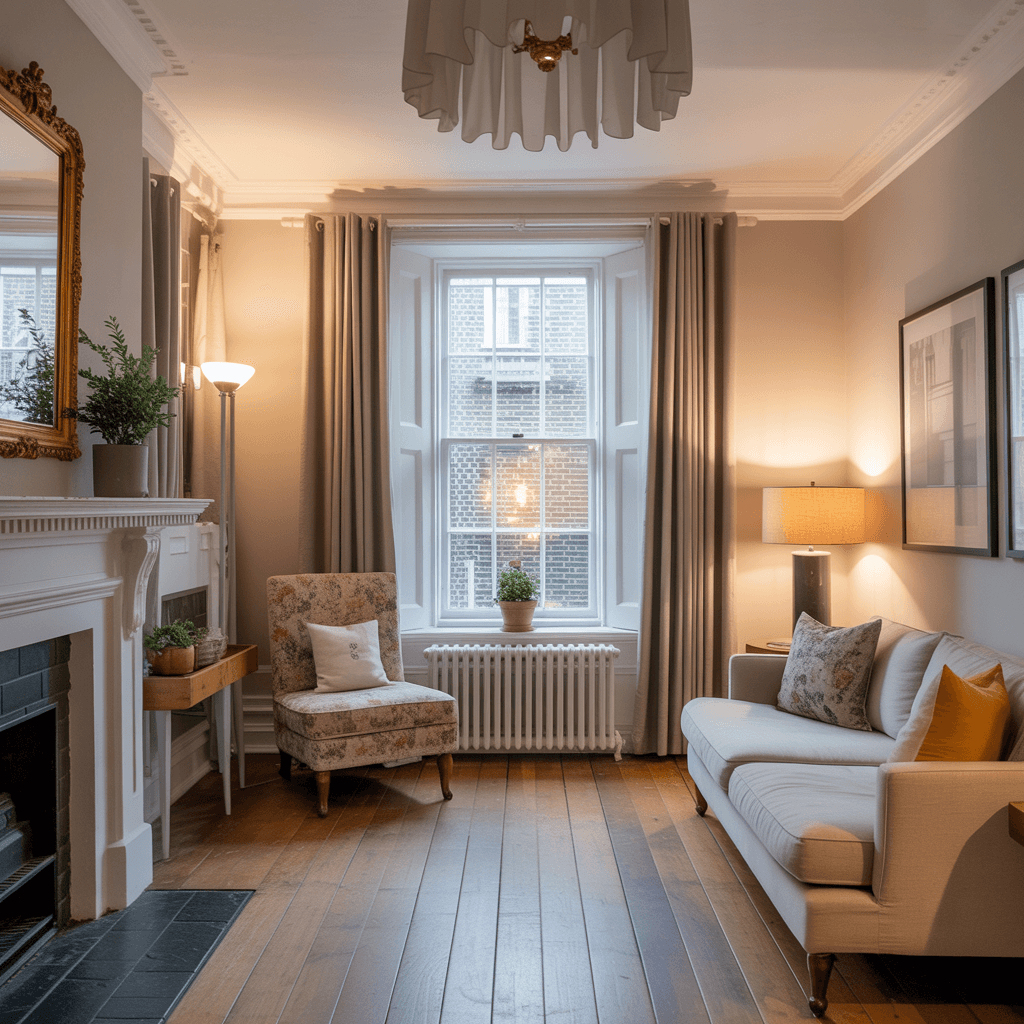
These are everywhere, for a reason: they’re cheap. But so is the performance.
- Hollow plastic frames with limited insulation
- Prone to warping, fading and joint failure
- Often rely on double glazing alone to scrape by on U-Value
They may pass Part L—barely—but rarely with grace. And in heritage areas? They’re outright rejected by planning departments.
If you’re aiming for long-term comfort, investment value or period authenticity, uPVC should not be in the conversation.
Aluminium Windows
Beautiful in modern builds. Sleek. Minimal. Highly durable.
But here’s the problem: metal is a thermal bridge.
Without serious engineering (like thermal breaks, foam cores, and advanced spacers), aluminium leaks heat at an alarming rate.
Even with triple glazing, many aluminium systems struggle to hit 1.4 W/m²K, unless they’re premium or passive-certified frames.
Great for architects. Tricky for compliance. Not always cost-effective.
Timber Windows
Here’s where we get serious. Solid timber has natural insulating properties, exceptional longevity when well-treated, and aesthetic compatibility with period properties.
- Ideal for conservation areas and listed buildings
- Outperforms plastic in U-Value, frame integrity and acoustic stability
- Can easily reach 1.2–1.4 W/m²K with high-spec glazing
At Sash Windows London, our timber frames are built for precision sealing, double or triple glazing integration, and can even be retrofitted in existing sash boxes without compromising the facade.
It’s heritage, modernised.
Aluclad / Composite Windows
This is the pinnacle of performance for many homeowners, architects and self-builders.
- Timber inside for insulation
- Aluminium outside for protection and maintenance-free longevity
- Achieves as low as 0.8–1.2 W/m²K with ease
- Fully compatible with Passivhaus, Part L, and long-term ROI expectations
Aluclad systems offer the best of both worlds—especially in London’s climate, where moisture, design standards and energy use all matter.
This is where Sash Windows London quietly shines.
We design, specify and install custom composite systems that exceed regulatory benchmarks, satisfy planners, and last for decades.
So, what actually delivers?
✅ U-Value verified
✅ Compliant under Part L
✅ Durable and beautiful
✅ Backed by real installation knowledge
That’s not a product.
That’s a system.
And it’s one we’ve been perfecting for over 20 years.
The 3 Questions Every Window Buyer Should Ask
When you’re investing in your home—especially in something as permanent as your windows—you’re not just choosing between timber or aluminium.
You’re choosing between:
- Comfort or compromise
- Regulation or risk
- A system built for decades… or one that unravels in five
So here are the three questions that separate the informed buyer from the one who gets sold the showroom special.
1. “What’s the certified U-Value for the whole window—not just the glass?”
Most suppliers will happily quote you the centre-pane U-Value—because it sounds impressive.
But that’s only for the glass. It excludes the frame, the seals, the spacers, the installation method—everything that actually affects your thermal comfort.
At Sash Windows London, we quote whole-window U-Values, verified and certified. Because that’s what Building Control—and your energy bills—care about.
2. “Will this window be fully compliant with Part L regulations?”
If they hesitate, walk away.
Non-compliant windows could:
- Fail Building Control
- Jeopardise insurance and grant eligibility
- Lower your EPC rating (bad for resale, bad for mortgages)
We don’t leave it to chance. Every system we install is designed from the ground up to meet or exceed Part L—not scramble to meet it after the fact.
3. “Can you prove the performance after fitting?”
This one makes the pretenders squirm.
Can your installer offer post-installation thermal proof?
Infrared imaging? Customer comparisons before and after install?
Actual documentation—not just a PDF someone downloaded from a German supplier’s website?
We can.
We do.
We’ve done it in Chelsea, in Richmond, in Islington and beyond.
Because when performance matters, you measure it.
These three questions aren’t a checklist.
They’re a test.
And the company that passes it?
That’s the company you trust to protect your home, your heat, and your peace of mind.
Let’s Put a Number on Your Comfort
By now, you know the truth:
- U-Value isn’t just a number—it’s the proof of performance.
- Compliance isn’t optional—it’s the baseline for any serious installer.
- And window systems aren’t interchangeable—they either deliver or they don’t.
The question isn’t “should I upgrade?”
The question is: “What is my home really costing me right now?”
That’s where we come in.
At Sash Windows London, we don’t pitch. We don’t push. We prove.
Whether you’re renovating a Georgian townhouse in Kensington, upgrading a post-war semi in Clapham, or future-proofing a new-build in Dulwich—we’ll show you, with clarity:
- Your home’s current energy performance (and where it’s leaking)
- What U-Values does your project actually need to meet (regulatory + comfort)
- Which systems will protect your investment—without compromising the look you love
We don’t just install windows.
We install peace of mind.
Ready to find out what your home’s real U-Value story is?
Book your free window performance consult today.
No jargon. No pressure. Just answers. Backed by over 20 years of craftsmanship, compliance, and client trust.

